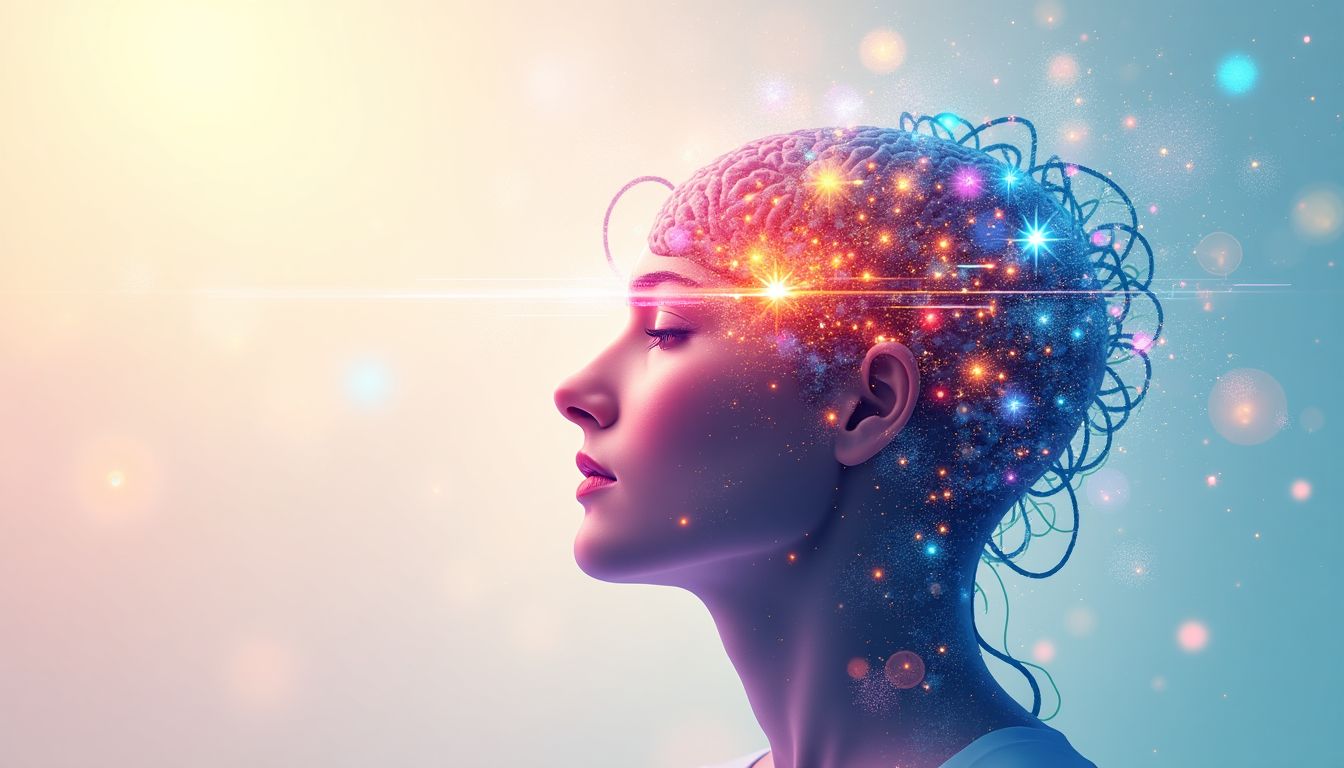"The greatest danger in times of turbulence is not the turbulence—it is to act with yesterday’s logic." – Peter Drucker. If Drucker were alive today, he’d probably say the same about Artificial General Intelligence (AGI). We’re standing at the edge of a revolution that’s not just about smarter machines—it’s about unleashing the full potential of human creativity. And yet, here we are, still stuck in the same old grind. Why? Because we’re too busy doing the work machines could easily take over.
What if I told you that AGI could be the spark that ignites a New Human Renaissance? A world where tedious tasks like data entry, admin work, and repetitive labor are handled by machines, freeing us to focus on what makes us uniquely human: our creativity, imagination, and ability to innovate. Think of it as the ultimate upgrade—a reset button for humanity. But will we rise to the occasion, or will we let this opportunity slip through our fingers?
1. The Liberation of Human Potential
1.1 The Burden of Mundane Tasks
Let’s be honest—nobody wakes up in the morning excited to tackle spreadsheets or answer the same customer service email for the 100th time. Yet, these mundane tasks consume a staggering amount of our time and energy. According to a study by McKinsey & Company, nearly 60% of occupations could have at least a third of their activities automated. That’s a lot of time we could spend brainstorming the next big thing instead of staring at Excel grids.
Take Away That Data Entry!
Consider the humble spreadsheet. It’s the bane of every office worker’s existence. Yet, AGI could turn this tedious chore into a thing of the past. Imagine a world where AGI handles all the number-crunching, leaving you free to strategize, innovate, and create. It’s like having a personal assistant who never sleeps, never complains, and always gets it right.
1.2 The Role of AGI in Automation
Enter AGI, the ultimate multitasker. Unlike narrow AI, which is designed for specific tasks like sorting emails or recommending movies, AGI can adapt to virtually any intellectual challenge. Think of it as the Swiss Army knife of artificial intelligence. Need to draft a report? AGI’s got it. Need to analyze complex data? AGI’s on it. Need to brainstorm new product ideas? AGI’s your muse.
For example, OpenAI’s ChatGPT is already helping writers, marketers, and educators by generating ideas and streamlining workflows. And that’s just the tip of the iceberg. As AGI evolves, it will take over more complex tasks, freeing us to focus on higher-order thinking and creative pursuits.
1.3 Historical Parallels: The Industrial Revolution
This isn’t the first time humanity has faced a seismic shift. The Industrial Revolution of the 18th and 19th centuries transformed society by automating manual labor. Suddenly, people weren’t spending their days weaving cloth or plowing fields—they were inventing machines, writing symphonies, and exploring new frontiers. Sound familiar?
The Industrial Revolution didn’t just change how we worked—it changed who we were. It sparked a cultural renaissance that gave us everything from Charles Dickens’ novels to the steam engine. AGI has the potential to do the same, but on an even grander scale. As Yuval Noah Harari, author of *Sapiens*, puts it, "History teaches us that what seems impossible today becomes inevitable tomorrow." AGI is that inevitable tomorrow.
2. Redefining Work and Education
2.1 The Future of Work
Picture this: a world where your boss is an AI, and your job is to dream up wild ideas while it handles the boring stuff. Sounds like a sci-fi movie, right? But with AGI, this could be our reality. Industries are already being reshaped by AI, but AGI will take it to the next level. Think about it: roles in creative writing, graphic design, and even scientific research will evolve. Instead of crunching numbers, humans will focus on storytelling, innovation, and problem-solving. Companies like OpenAI are already paving the way, showing us how AI can complement human skills rather than replace them. The future of work isn’t about competition—it’s about collaboration.
2.2 Education for the AGI Era
Remember when memorizing multiplication tables was a big deal? Yeah, those days are numbered. In the AGI era, education will shift from rote learning to fostering creativity, critical thinking, and emotional intelligence. Schools will teach kids how to work alongside AI, not just how to use it. Institutions like the MIT Media Lab are already exploring how to integrate AI into learning environments. Imagine a classroom where AGI helps students brainstorm ideas for a science project or even critiques their essays. Education will become more personalized, engaging, and, dare we say, fun. Who knew learning could be this exciting?
2.3 AGI as a Collaborative Partner
AGI isn’t here to steal your job—it’s here to be your wingman. Think of it as the ultimate co-worker: never gets tired, never complains, and always has a fresh perspective. Whether you’re a scientist, artist, or entrepreneur, AGI can enhance your abilities. For example, Google DeepMind is developing AI systems that can assist with everything from medical diagnoses to game design. The key is to see AGI not as a threat but as a tool to amplify human potential. After all, who wouldn’t want a partner that can handle the grunt work while you focus on the big ideas?
3. The Creative Explosion: Art, Music, and Literature
3.1 AGI as a Muse
Ever had writer’s block so bad you wanted to throw your laptop out the window? Enter AGI, the ultimate muse. AGI can generate ideas, suggest plot twists, and even create entire pieces of art. Imagine working on a novel and having an AI brainstorm character arcs or help with world-building. Artists like Refik Anadol are already using AI to create stunning visual art that blends technology and creativity. AGI doesn’t replace the artist—it inspires them to push boundaries and explore new horizons. Suddenly, that blank page doesn’t seem so intimidating.
3.2 Democratizing Creativity
Artistic tools and resources have often been gatekept by those who can afford them. But AGI is here to level the playing field. With AI-powered tools, anyone can create music, write stories, or design graphics. Platforms like MidJourney are making it easier than ever to turn ideas into reality. Whether you’re a seasoned pro or a complete beginner, AGI can help you unleash your inner Picasso. It’s like having a personal art tutor in your pocket—minus the snooty attitude.
3.3 The Emergence of New Art Forms
When humans and AGI team up, the results can be mind-blowing. We’re already seeing the rise of hybrid art forms that blend human creativity with AI-generated content. Take AI-generated music, for example. It’s not just about mimicking existing styles—it’s about creating something entirely new. The possibilities are endless: interactive storytelling, immersive virtual reality experiences, and even art that evolves over time. AGI isn’t just changing the game—it’s creating a whole new game altogether.
4. Scientific Discovery and Innovation
4.1 Accelerating Research
Imagine a world where scientific breakthroughs happen at lightning speed. AGI has the potential to supercharge research by analyzing massive datasets in seconds, spotting patterns that would take humans years to uncover. For example, MIT researchers are already using AI to predict complex protein structures, a task that once required months of lab work. AGI could take this further, proposing hypotheses, designing experiments, and even interpreting results. The result? Faster cures for diseases, new energy sources, and solutions to global challenges that once seemed insurmountable.
4.2 Solving Complex Problems
Climate change, pandemics, and energy sustainability are among the most pressing problems of our time. AGI could be the ultimate problem solver, crunching numbers, modeling scenarios, and devising strategies on a global scale. For instance, Google DeepMind has already used AI to optimize energy usage in data centers, reducing carbon emissions by 40%. With AGI, we could tackle even bigger challenges, like designing carbon-neutral cities or predicting natural disasters before they happen.
4.3 Ethical and Philosophical Implications
But with great power comes great responsibility. As AGI takes on more decision-making roles, we must ask: Who’s in control? How do we ensure AGI aligns with human values? Institutions like Stanford University are already grappling with these questions, exploring frameworks for ethical AI use. The key is to strike a balance between innovation and oversight, ensuring AGI serves humanity rather than the other way around.
5. The Societal Impact of a Creative Economy
5.1 Economic Transformation
Picture a world where creativity is the new currency. As AGI handles repetitive tasks, the economy will shift toward creative and intellectual industries. For example, companies like Adobe are already using AI to enhance creative workflows, empowering designers to focus on innovation. This creative economy could lead to new business models, like subscription-based art platforms or on-demand intellectual services. It could also redistribute wealth, as more people have the time and resources to pursue their passions.
5.2 Social and Cultural Shifts
AGI isn’t just changing how we work—it’s changing how we live. With more free time, people could focus on community building, cultural exchange, and personal growth. Imagine a world where artists collaborate across continents, scientists share breakthroughs in real time, and educators inspire the next generation of innovators. AGI could foster a global culture of collaboration, breaking down barriers and uniting us in shared creativity.
5.3 Challenges and Risks
Of course, this brave new world isn’t without its challenges. Job displacement is a real concern, as AGI takes over roles in industries like manufacturing, retail, and transportation. To address this, we’ll need robust policies like universal basic income or reskilling programs. Ethical frameworks will also be crucial to prevent misuse of AGI, ensuring it’s used for the greater good. The goal is to harness AGI’s potential while safeguarding the values that make us human.
6. AI Solutions: How AGI Will Tackle Mundane Tasks
6.1 Task Identification and Prioritization
AGI would first identify repetitive tasks across industries using advanced data analysis and machine learning techniques. By analyzing workflows in sectors like healthcare, education, and manufacturing, AGI can pinpoint inefficiencies and areas where automation would yield the greatest benefit. For example, administrative tasks such as scheduling, data entry, and customer service inquiries are prime candidates for automation. Tools like OpenAI's GPT models can already assist in these areas, but AGI would take this to a whole new level by intelligently prioritizing tasks based on urgency and impact.
6.2 Development of Specialized AI Tools
Once tasks are identified, AGI would develop tailored solutions to address them. Picture AI-driven administrative assistants that can manage calendars, draft emails, and even handle complex logistics. In manufacturing, AGI could oversee fully automated assembly lines, reducing human error and increasing efficiency. For data-heavy industries like finance and healthcare, AGI could create intelligent processors capable of analyzing vast datasets in seconds. Companies like Google DeepMind are already pioneering these efforts, but AGI would integrate these tools seamlessly into daily operations.
6.3 Integration with Existing Systems
The beauty of AGI lies in its ability to integrate with existing systems without causing disruption. Imagine a hospital where AGI coordinates patient care, optimizes staff schedules, and even predicts equipment maintenance needs—all while working alongside human staff. AGI would use APIs and machine learning frameworks to ensure compatibility with legacy systems, making adoption smooth and cost-effective. The MIT Media Lab is already exploring these possibilities, but AGI would standardize and scale them globally.
6.4 Continuous Learning and Improvement
AGI isn’t a static solution; it’s a dynamic system that evolves over time. By continuously monitoring performance and gathering feedback, AGI would refine its algorithms to improve efficiency and accuracy. For example, an AGI-driven customer service chatbot would learn from every interaction, becoming more adept at resolving issues and providing personalized support. This continuous improvement cycle would ensure that AGI remains relevant and effective in a rapidly changing world. Research institutions like Stanford University are at the forefront of developing self-improving AI systems.
6.5 Ethical Safeguards and Human Oversight
While AGI holds immense potential, it also raises important ethical questions. To mitigate risks, AGI systems would incorporate robust ethical guidelines and maintain human oversight. For instance, an AGI managing financial transactions would include safeguards to prevent fraud and ensure transparency. Organizations like the Partnership on AI are already working on frameworks to ensure that AI systems are used responsibly. Humans would always have the final say, ensuring that AGI serves as a tool for empowerment, not exploitation.
Actions Schedule/Roadmap (Day 1 to Year 2)
Here’s a detailed roadmap for implementing AGI-driven solutions, designed to guide institutions, organizations, and governments in creating a future where mundane tasks are automated, and human creativity flourishes:
- Day 1: Assemble a team of leading AI researchers, ethicists, and industry experts to define the scope of the project.
- Day 2: Identify key repetitive tasks across industries using data analysis and machine learning.
- Week 1: Conduct a global survey to pinpoint areas of greatest need and prioritize tasks for automation.
- Week 2: Begin developing AI prototypes for priority tasks, leveraging existing tools and frameworks.
- Month 1: Test prototypes in controlled environments to evaluate efficiency and accuracy.
- Month 2: Analyze test results and refine algorithms, incorporating feedback from human users.
- Year 1: Launch pilot programs in select industries, such as healthcare, education, and manufacturing.
- Year 1.5: Scale successful pilots globally, ensuring seamless integration with existing systems.
- Year 2: Evaluate the impact of AGI solutions, measure improvements in productivity and creativity, and plan for further advancements.
Key Contributors:
- OpenAI: Pioneering AGI development and creating versatile AI tools.
- MIT Media Lab: Researching human-AI collaboration and integrating AGI into daily life.
- Google DeepMind: Advancing AI capabilities and developing specialized applications.
- Stanford University: Providing ethical and philosophical perspectives to guide AGI development.
Embracing the New Human

FAQ
What is AGI?
AGI, or Artificial General Intelligence, refers to AI systems that can perform any intellectual task that a human can. Unlike Narrow AI, which is designed for specific tasks, AGI can adapt to virtually any challenge. Think of it as a super-smart assistant that can help with everything from math problems to creative writing. For more on AI advancements, check out OpenAI, a leader in AGI research.
How will AGI inspire creativity?
By taking over repetitive tasks like data entry or scheduling, AGI will free up time and mental energy for humans to focus on creative and intellectual pursuits. Imagine artists, writers, and scientists having more time to experiment, innovate, and dream big. AGI can even serve as a creative partner, offering fresh ideas and perspectives. For an example of AI in art, visit DeepDream Generator’s Instagram page.
What are the risks of AGI?
While AGI has incredible potential, it also comes with risks. Job displacement, ethical dilemmas, and the need for robust oversight are key concerns. It’s important to create safeguards to ensure AGI is used responsibly. For a deeper dive into AI ethics, explore the work of the MIT Media Lab.
When will AGI become a reality?
Experts predict AGI could emerge within the next few decades, though the timeline remains uncertain. Companies like Google DeepMind and Stanford University are at the forefront of this research. While we wait, it’s crucial to prepare for the changes AGI will bring.
How can we prepare for the AGI era?
- Invest in education: Focus on teaching creativity, critical thinking, and emotional intelligence.
- Foster collaboration: Work with AI as a partner rather than a competitor.
- Develop ethical frameworks: Ensure AGI is used responsibly and for the greater good.
For insights into preparing for the future, check out The World Economic Forum.
Will AGI replace human jobs?
AGI will certainly change the job landscape, automating many repetitive tasks. However, it will also create new opportunities in creative and intellectual fields. The key is adaptability—learning to work alongside AGI rather than competing with it. For more on the future of work, visit the McKinsey & Company website.
How does AGI differ from Narrow AI?
Narrow AI is designed for specific tasks, like voice assistants or recommendation algorithms. AGI, on the other hand, can perform any intellectual task a human can, making it far more versatile. Think of Narrow AI as a specialized tool, while AGI is a jack-of-all-trades. For a breakdown of AI types, see the Wikipedia page on AGI.
What are some real-world examples of AGI in action?
While AGI hasn’t been fully realized yet, projects like OpenAI’s GPT-4 and Google DeepMind’s AlphaFold showcase the potential of advanced AI. These systems demonstrate how AI can tackle complex problems, from language processing to protein folding.
Can AGI help solve global challenges?
Absolutely! AGI has the potential to address pressing issues like climate change, disease, and energy sustainability. By analyzing vast datasets and proposing innovative solutions, AGI could accelerate progress in these critical areas. For example, The United Nations is exploring how AI can support sustainable development goals.
What happens if AGI makes a mistake?
While AGI is designed to be highly accurate, no system is perfect. That’s why human oversight and ethical safeguards are essential. AGI systems will need to be continuously monitored and improved to minimize errors. For more on AI safety, visit the Future of Life Institute.
Wait! There's more...check out our gripping short story that continues the journey: The Cobalt Streak
Disclaimer: This article may contain affiliate links. If you click on these links and make a purchase, we may receive a commission at no additional cost to you. Our recommendations and reviews are always independent and objective, aiming to provide you with the best information and resources.
Get Exclusive Stories, Photos, Art & Offers - Subscribe Today!




























Post Comment
You must be logged in to post a comment.